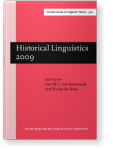The sociolinguistics of spelling
A corpus-based case study of orthographical variation in nineteenth-century Dutch in Flanders
The reunion of the Northern and Southern Low Countries under William I (1814–1830) marked the beginning of a renewed and intensified linguistic contact between the North and the South of the Dutch linguistic area. Two writing traditions usually regarded as different came into close contact, giving rise to intense spelling debates in Flanders. The Northern provinces had had an official orthography since 1804, whereas competing spelling systems existed the South. In the contemporary language debates, several orthographical features were repeatedly brought to the fore, and developed into strong markers of regional, social and religious identities.
The present paper attempts to reconstruct the sociolinguistic landscape of the Southern Netherlands in the early nineteenth century, by focusing on normative publications, metalinguistic debates, and private language planning initiatives between 1814 and 1830. Special attention will be paid to the role of orthography in processes of identity formation. Furthermore, aiming to shed more light on some of the sociolinguistic principles at work, we will compare the metalinguistic discourse to actual language use, as represented in a specially compiled diachronic corpus of court files, including police reports, witness interrogation reports, and high court indictments. An analysis of the results will uncover, among other things, clear indications of an ongoing process of levelling and a gradual convergence towards Northern linguistic norms.
Cited by (1)
Cited by one other publication
Vosters, Rik & Gijsbert Rutten
This list is based on CrossRef data as of 23 july 2024. Please note that it may not be complete. Sources presented here have been supplied by the respective publishers.
Any errors therein should be reported to them.
